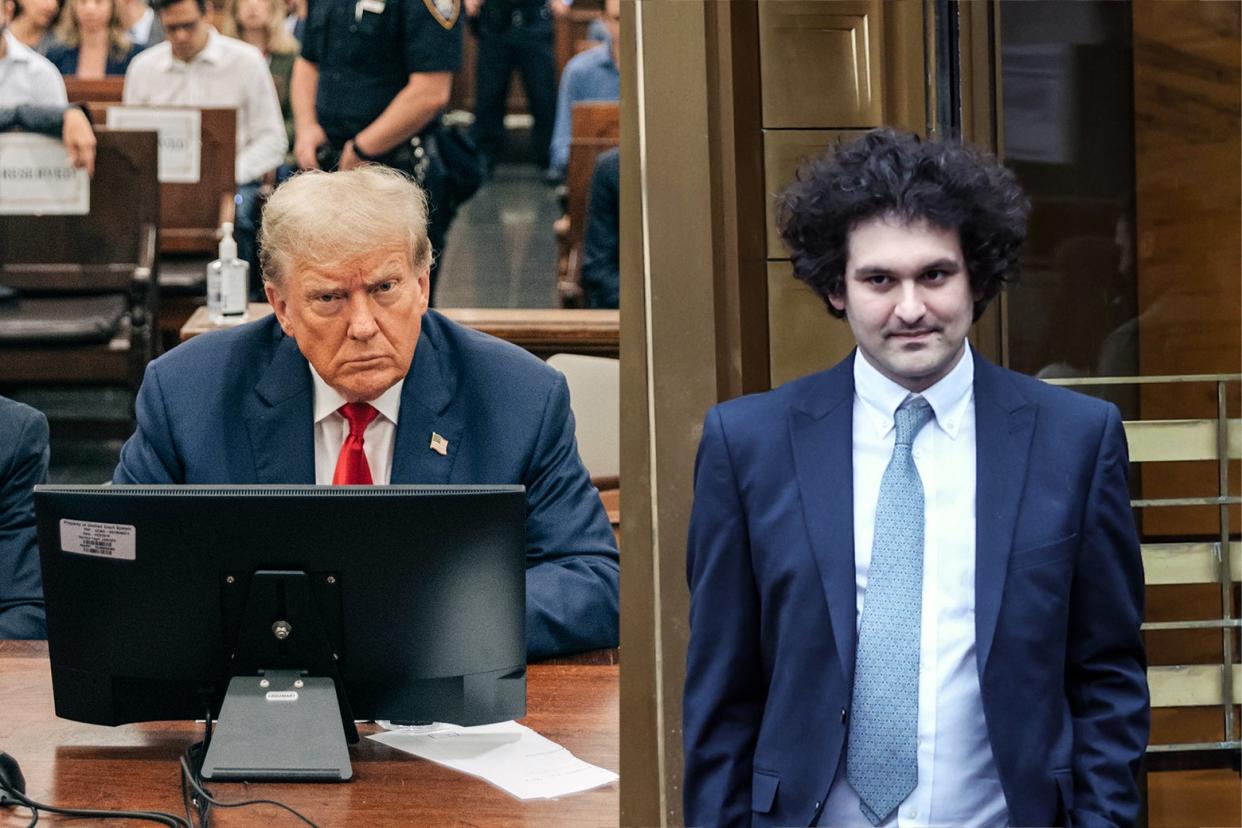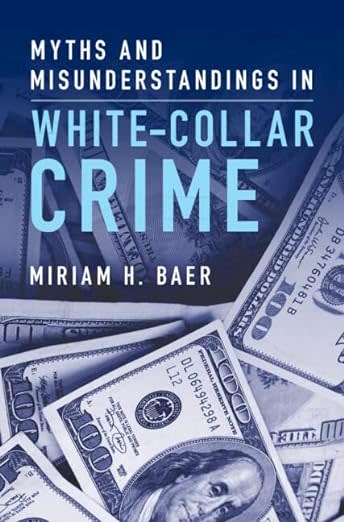What White-Collar Criminal Defendants Like Trump and Sam Bankman-Fried Have in Common

- Oops!Something went wrong.Please try again later.
This essay is adapted from the book Myths and Misunderstandings in White-Collar Crime, out now from Cambridge University Press.
Notwithstanding his front-runner status in the 2024 GOP presidential primary race, Donald Trump is in a lot of trouble. So much so that journalists and pundits have been debating the likely sentence that the former leader might receive if convicted of the many federal crimes charged in the Mar-a-Lago documents case and the Jan. 6 obstruction indictment, not to mention his exposure on state charges in New York and Georgia.
Several of Trump’s violations could easily be described as white-collar crimes—nonviolent offenses that are characterized by their deception and intentional interference with regulatory or property interests. Trump’s alleged crimes are notable because they revolve around his endeavors to subvert the nation’s democratic processes and laws. In many other ways, however, they are quite ordinary, as they reflect an individual’s repeated efforts to deceive others and to impede the administration of government systems.

Particularly at the charging stage, there is a tendency among journalists to speculate how much prison time an indicted defendant “faces” if convicted in high-profile criminal prosecutions. They often do this by scrutinizing the charge (e.g., “obstruction of justice”), extracting the statute’s maximum prison sentence (“five years’ imprisonment”), and then aggregating that amount with other counts if they exist. If the indictment charges three counts of mail fraud, then the media will dutifully report that the individual is facing “as much as” 60 years in jail. In Sam Bankman-Fried’s case, headlines say he faces as much as 115 years in prison if convicted, which is an extraordinary amount of time for a 31-year-old accused of fraud—even a billion-dollar one.
As Ken White recently pointed out, though, predicting a sentence on the basis of the number of counts charged and their statutory limits can be extremely misleading—particularly for the defendants who haven’t been accused of overturning a presidential election or running a massive Ponzi scheme.
As insiders well know, in most cases, judges effectively ignore or de-emphasize multiple counts when those counts arise out of the same offense. And again, in all but a few outliers, judges sentence white-collar crime defendants to terms far below the statutory maximum. In fact, federal statutes don’t really control federal sentencing. Instead, the United States Sentencing Guidelines form the starting point for federal sentencing, and under the guidelines, most white-collar crime offenders receive far less time in prison than the maximum set by statute.
That’s as it should be. The purpose of a statutory maximum isn’t to guarantee a long sentence in prison, but rather to set a limit on the government’s deprivation of liberty. But the common refrain that someone is “facing” five years in jail sounds a lot like a prediction instead of a hard limit. So, when the defendant ends up receiving a fraction of that amount—or no jail time at all, as was the case for Carrie Tolstedt, the executive who interfered with the Wells Fargo investigation—we blame the prosecutor and declare the system broken.
That’s a shame because neither of these approaches allows us to see—and possibly fix—a separate issue, which one might call white-collar crime’s “umbrella problem.”
It’s easy to criticize the media for overemphasizing someone’s prison exposure, and easier still to excoriate prosecutors for sweetheart deals. But many of white-collar crime’s failings begin with our federal statutes. If we wish to cast blame, we might as well start with Congress, the institution responsible for drafting our federal criminal laws.
Unlike state criminal codes, the federal criminal code does not “grade” or subdivide most of its white-collar offenses. There is no such thing as first-degree fraud and second-degree fraud. There is just fraud—divvied up by the mechanism the fraudster happens to use, such as the mails or interstate wires.
Although the federal code distinguishes the fraudster’s mechanism (the mails or wires) or her intended victim (such as a financial institution), it does not distinguish a fraud scheme’s severity or harm. That means that a single federal fraud statute prohibits the most diabolical schemes along with the garden variety cons.
If you could visualize the state system and federal systems next to each other, you might draw two figures. On the left would be a stairway of offenses of increasing severity; these are the familiar degrees that characterize state criminal codes. These steps are so ubiquitous that they have become entwined with our social fabric. Everyone intuitively understands that “first-degree murder” represents a much more serious offense than “fourth-degree homicide.”
To represent federal white-collar statutes, we would probably draw a large umbrella. To depict the effect of multiple statutes, we might draw a series of overlapping umbrellas. That is the best way to describe all-encompassing laws such as fraud, conspiracy, and obstruction of justice. These laws are broad and flat, and they capture an enormous amount of behavior.
Whatever our feelings about these umbrellas—whether they have grown too large and criminalize too much misconduct—it is undeniable that they fail to distinguish related but different types of misconduct. Instead, the federal system leaves that slicing and dicing for a different phase of the criminal justice system: sentencing. That creates even more confusion. Only experts and insiders understand the difference between statutory maximum sentences and the United States Sentencing Guidelines. Moreover, the federal system’s back-ended approach has freed Congress of its obligation to identify, in plain words, the conduct that makes a given type of behavior more deserving of punishment or less deserving of punishment as a matter of law.
If we are serious when we say criminal law should reflect our commitment to the rule of law, then we should want our democratically elected legislature to be the institution to tell us—upfront—what the very worst version of a white-collar offense is and how it differs from a less condemnable variation. And if we are serious about building respect for our enforcement institutions, we should clothe our federal statutes in the very same language as many of our state statutes; society already knows what a “degree” is. Congress doesn’t have to remake the wheel if it wishes to subdivide its white-collar statutes; it can borrow from state codes.
Many decades ago, there was a chance Congress might follow state legislatures in reforming its criminal code. Unfortunately, Congress instead chose to layer on a complex and confusing sentencing system while keeping its federal umbrella statutes intact. Over time, these umbrellas have only grown larger, more numerous, and more prone to high statutory maximums.
How can we fix this issue? First, we can stop creating more umbrellas. We have more than enough criminal statutes in our federal code to cover harmful and condemnable behavior. We don’t need new ones. Second, we can bring together a group of elected officials and stakeholders and charge them with the essential task of rewriting and grading our white-collar crimes. To be sure, the task would be difficult and generate heated debate. Still, this group would also be able to draw on concepts already articulated in state codes and federal sentencing guidelines. More importantly, it would be a testament to the belief that our democratically elected legislature is the only institution that should define criminal law—for its internal boundaries as much as its external ones.

